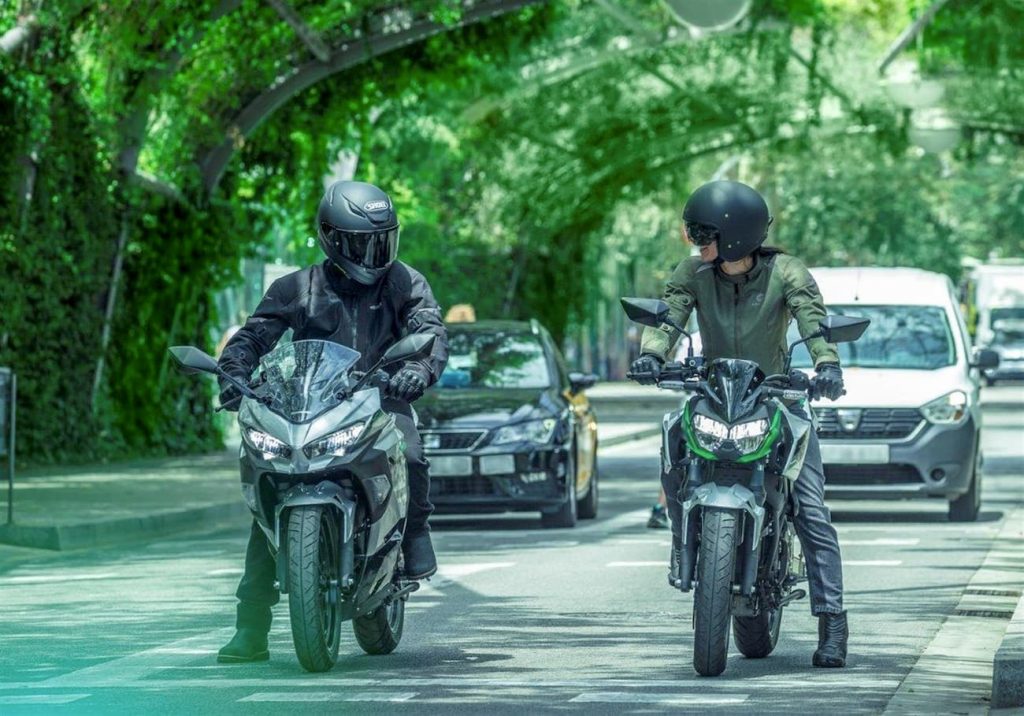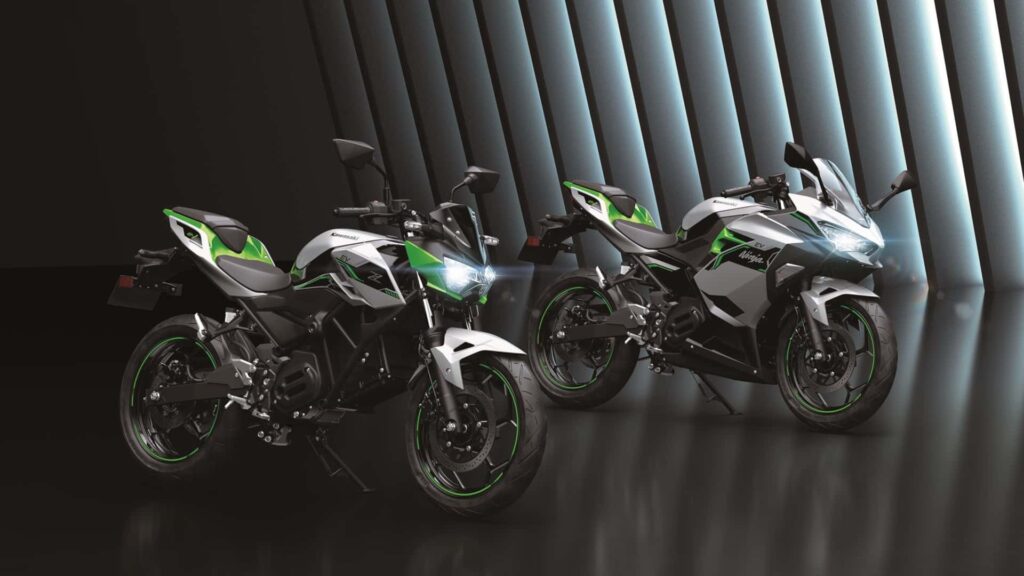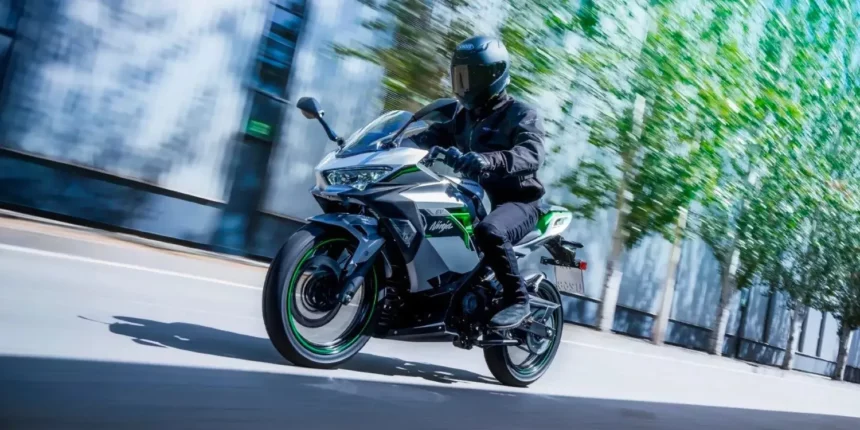Kawasaki, a renowned name in the world of motorcycles, has unveiled the specifications and pricing for its debut electric motorcycles – the Kawasaki Ninja e-1 and Z e-1. These electric bikes are set to hit the North American markets (including the US and Canada) as well as the UK. In the US, the Ninja e-1 comes with a price tag of $7,599, while the 2024 Z e-1 starts slightly lower at $7,299. These competitive prices align with the bikes’ modest performance, positioning them effectively in the commuter electric motorcycle segment.

Both the Kawasaki Ninja e-1, a faired sport bike, and the Z e-1, a naked bike, share a common 5 kW electric motor. While the motor is rated for 9 kW of peak power, it’s important to note that this level of power is only accessible in short bursts.
The bikes offer two riding modes: Eco and Road mode. Additionally, there’s a boost button that temporarily increases burst power and top speed. In Eco mode, the bikes operate with reduced power, limiting them to 40 mph (64 km/h). However, in boost mode, they can reach up to 47 mph (76 km/h). On the other hand, Road mode provides a constant speed of 55 mph (88 km/h) but can be boosted up to 65 mph (105 km/h) for brief periods, thanks to the E-Boost feature, which is limited to 15 seconds.

Both models feature removable 1.5 kWh battery packs, offering a combined capacity of 3 kWh. It’s worth noting that this capacity is smaller than some other electric motorcycles, leading to concerns about range. Kawasaki states that these bikes can cover approximately 41 miles (66 km) in Road mode without using the electric boost feature, achieving an efficiency of around 73 Wh/mile, which likely corresponds to an average speed of about 35 mph (56 km/h).
Charging the batteries is convenient, with each 25 lb. (11.4 kg) battery capable of being recharged from a standard wall outlet in under four hours or from 20% to 80% charge in less than two hours.
While the pricing of these Kawasaki electric motorcycles is approximately half that of typical Zero or LiveWire electric bikes, they do have significantly lower performance levels. This positions them as urban-focused motorcycles with a real-world range of less than 40 miles (64 km) and a top speed of 55 mph (88 km/h), making them more suitable for local city commuting rather than highway travel.

However, for urban residents, these bikes may offer exactly what’s needed. With removable batteries, apartment dwellers can enjoy the convenience of street parking and at-home charging, as long as they can handle the weight of the 50-pound (23 kg) battery packs.
In conclusion, Kawasaki’s entry into the electric motorcycle market with the Ninja e-1 and Z e-1 brings competitive pricing to the table, making electric mobility more accessible for urban commuters, albeit with some compromises in terms of range and top speed. These bikes cater to a specific niche of riders looking for efficient and eco-friendly transportation within city limits.








